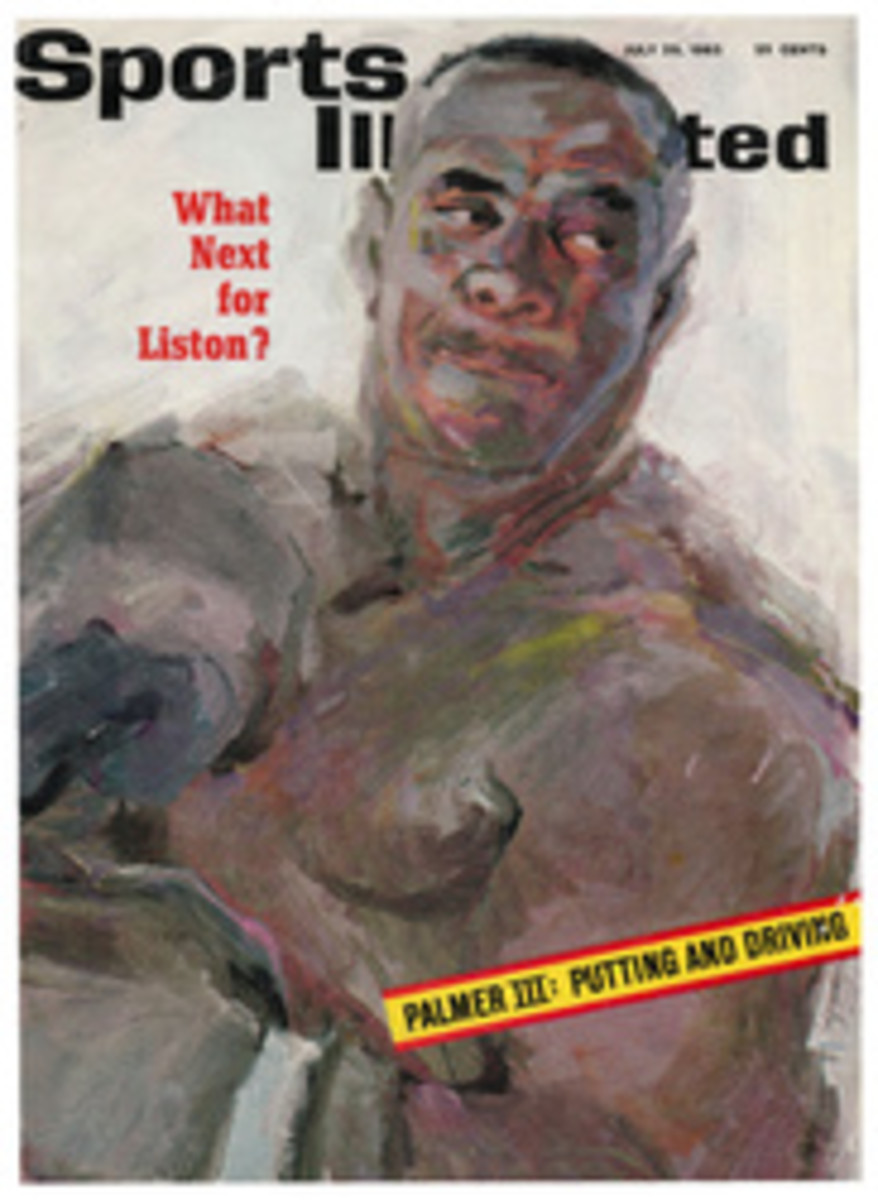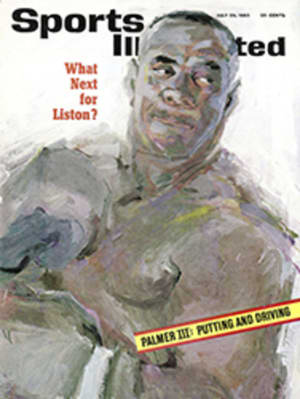
HOTTEST MAN IN A FURNACE
If they ever hold a golf tournament in hell, the PGA will sponsor it and Jack Nicklaus will win it. To show how practical this would be, the Professional Golfers' Association held its own esteemed championship in Dallas last week, enabling its pros to endure a preliminary trial by fire. In the cool, cool, cool of the evening the Dallas temperature would drop to 100° or so, but in the shimmering sun on the fairways of the DAC (for Dallas Athletic Club) Country Club it was climbing toward 110° every day. Galleries and contestants alike tried to hide beneath the big golf umbrellas that normally are used to fend off more refreshing weather, like cloudbursts; the players spent more time wiping off sweat with Turkish towels than they did lining up putts; three weather-hardened touring pros bowed out midway through the tournament because of heat exhaustion, and most of the field of 167 would have liked to follow in their wobbly wake. Conditions were so bad that Gary Player, that believer in black, surrendered and wore white. Yet successfully marching through all of it, and playing some of the best golf of his young and exciting career, was Jack Nicklaus. By shooting a cool 69-73-69-68, he took the $13,000 first prize, raised his total 1963 winnings to $75,140 and proved that he must have the highest boiling point in golf.
Weeks before the tournament started, the golfers were dreading the anticipated heat—and rightfully so. As Dow Finsterwald said after shooting a 66 in the third round, "There have been lots of times when my shirt was soaked through, but today I sweated my pants through. I can't remember ever doing that before." Young, curly-haired Bruce Crampton, who was raised in the oppressive summer heat of Australia, observed that "At home we would be at the beach swimming when the climate is like this. We only play golf in the early morning and the late afternoon."
The first excitement of the well-roasted championship was stirred up by a skinny, sad-faced, 27-year-old assistant pro from the Hinsdale (Ill.) Golf Club named Dick Hart. With the help of a hole in one on the 216-yard 16th, a shot that was witnessed by a gallery of a few relatives, Hart brought in a 66 on the first day, just a stroke over the DAC Country Club competitive course record. Meanwhile, the best that any of the regular tournament pros could score was 69. Among the five who did were Nicklaus and the two most recent Open champions—Julius Boros (U.S.) and Bob Charles (British). Player, the defending champion, and Arnold Palmer, both of whom have been in the throes of the golfing miseries for several weeks, were deep in the ruck with 74s and though Player was to shoot a fine 67 later, neither he nor Palmer ever really recovered from their first-day troubles.
On the second day, when a brisk wind began to blow from somewhere off the River Styx, the scores were even less impressive. Hart was one over par with a 72, but he still led. Three strokes back at 141 were Boros, Tony Lema and Shelley Mayfield, who had been one of the most promising of the suntanned young Texas pros of a decade ago but had since retired to the relative ease of teaching in the shade. These four were the only ones under par. Nicklaus, with a so-so 73, had dropped into a tie for fifth at even-par 142. "That has to be the worst scoring in the history of golf," Nicklaus said, only half kidding.
Actually, the course appeared to be nowhere near that difficult, either to the players themselves or to the sparse galleries that watched. The DAC is a relatively new course, built in 1955, and its 7,046 yards give it the kind of length that is nowadays considered essential to test the enormous power of modern tournament golfers. It was beautifully groomed for the PGA, the Bermuda fairways lush and closely cropped. Its greens were large and soft enough to hold approach shots. "A very fair golf course," was the virtually unanimous comment from the pros. Translated, that means they thought they could tear it apart.
On the third day Crampton did. Thanks to an eagle and five birdies, he tied the course record with a 65 and took a two-stroke lead. In second place was soaking-wet Dow Finsterwald. Nicklaus, with what for him was a fairly routine 69, was a stroke behind Finsterwald. But his position was good. Helped by the fact that he was hitting a warm ball through the thin Texas air, Jack was getting tremendous distance. He rarely had to take anything out of his golf bag but his driver, wedge, putter and towel. (He had set a PGA record on Wednesday when he won the driving contest with a smasher of 341 yards.) Meanwhile, just about everybody else, including Hart and Mayfield, was wilting in the heat like a yellow rose of somewhere.
By the closing holes Sunday afternoon the championship had been narrowed down to a three-way contest between Nicklaus, Dave Ragan—a Floridian with a lot of experience with both heat and Texas—and Crampton. They composed a Shadrach, Meshach and Abednego of golf, and it was plain that he who could suffer longest would prevail.
By the 12th hole Crampton's lead was gone. On 14 he spent two shots thrashing around in the tall Bermuda grass that serves the DAC so well as rough, and he was done, well done. Ragan held on until 17, where he hit a wild drive in the general direction of a TV tower, perhaps figuring it was the only shade. He bogeyed the hole. Meanwhile Nicklaus had sunk a 30-foot birdie putt on 15. This sudden two-stroke bulge gave bulging Jack all the lead he needed, and the PGA had a new champion.
When the final totals were in, Finsterwald, a weary oldster of 33 years who tied Crampton for third place, was the only golfer above the age of 27 who was able to break par for the 72 holes. It takes a hardy young man to play winning golf in Texas in July. Jack Nicklaus may look like a soft fellow who trains on hot fudge sundaes, but he ably proved how hardy he is.
PHOTO
SHEL HERSHORN

